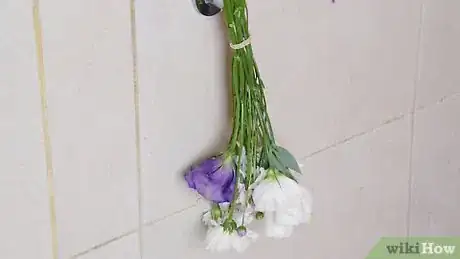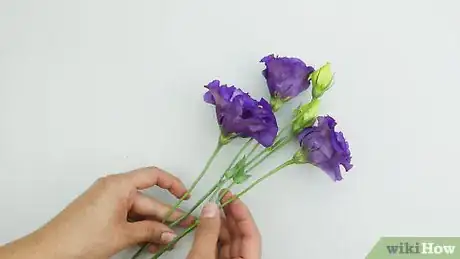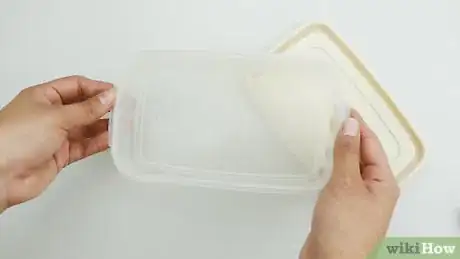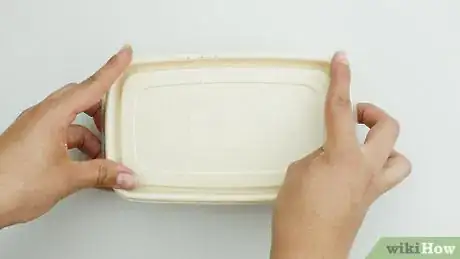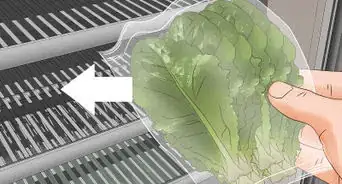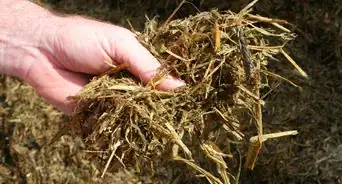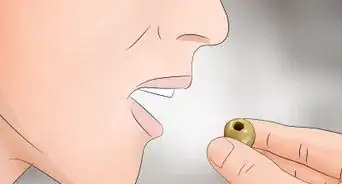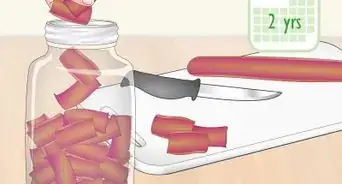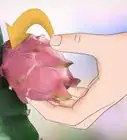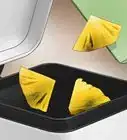This article was co-authored by Lana Starr, AIFD. Lana Starr is a Certified Floral Designer and the Owner of Dream Flowers, a floral design studio based in the San Francisco Bay Area. Dream Flowers specializes in events, weddings, celebrations, and corporate events. Lana has over 14 years of experience in the floral industry and her work has been featured in floral books and magazines such as International Floral Art, Fusion Flowers, Florist Review, and Nacre. Lana is a member of the American Institute of Floral Designers (AIFD) since 2016 and is a California Certified Floral Designer (CCF) since 2012.
There are 9 references cited in this article, which can be found at the bottom of the page.
wikiHow marks an article as reader-approved once it receives enough positive feedback. This article received 11 testimonials and 87% of readers who voted found it helpful, earning it our reader-approved status.
This article has been viewed 651,862 times.
Would you like to keep your house full of flowers right through the winter? You can dry your favorite blossoms at home and do exactly that. There are many ways to dry flowers, and part of the fun is experimenting to find out which works best for each species.
Steps
Air-Drying Flowers
-
1Pick your flowers. Most flowers air-dry best when they are just beginning to open. They will continue to open slightly as they dry, and a fully open flower may lose its petals.[1] This method works best for small, sturdy blossoms, such as lavender or larkspur.[2]
- Wilting and pest damage becomes more obvious after drying. Choose only the best flowers, and pick extra in case of problems.[3]
-
2Prepare the flowers in bunches. Strip each flower stem of all leaves. Separate the flowers by species, then make bunches with up to 10 flowers of a single type. Large flowers such as hydrangeas, roses, and peonies should be dried individually instead.[4] [5]
- Strawflower and some other species have weak stems that break apart when dried. Cut the stem off instead and thread florist's wire through the base of the flower.[6]
Advertisement -
3Tie the end of each bunch with a rubber band. Wrap a large rubber band around two or three stems, wrap it several times around the whole bunch, then finish by wrapping it around another two or three stems.[7] The stems will shrink as they dry, but the rubber band will stay tight around them.
- The rubber band shouldn't press so hard that it creases the stem; this can cause damp pockets and lead to rot. If you're concerned about this, tie the bunch with twine or raffia instead. You may need to re-tie the twine halfway through drying.
-
4Hang the bunches upside-down. Keep them in a warm, dark, dry location to prevent rot and minimize fading.[8] Air circulation helps the flowers dry and prevents mold, so keep the bunches spaced out in an area with a good cross-breeze, at least 6 inches (15cm) below the ceiling.[9]
- You can hang the flowers from hooks, nails, or coat hangers. One easy way to do it is a paper clip bent into an S-shape. Poke one end underneath the rubber band, and the other end over the hook.[10]
-
5Wait for 2–4 weeks. The flower is ready when the petals are crisp to the touch. Occasionally a bunch will take longer than four weeks, usually because the room isn't ideal or the flower petals are unusually thick.
- The stems usually dry completely straight. If you want a more natural, curved look, submerge the stems in warm water until soft. Bend them however you like, and hold them in position with weights until they dry again.[11]
-
6Preserve them with hairspray (optional). A light mist of aerosol hairspray or floral sealer will set the flowers' shape. This will make them less susceptible to breaking or dropping petals.[12]
Using a Microwave and Desiccant
-
1Choose your flowers. Microwaving works best for flowers with many petals, and no hairy or sticky surface. Roses, zinnias, and marigolds are good options, although varieties with thick petals might not work out.[13] Pick the flowers when half-open and firm, before petals start dropping.[14]
- Cut the stems pretty short for this method — about 1–2 inches (2.5–5cm)
-
2Wire the flowers (optional). The stems won't be flexible after microwaving. If you want to bend the flowers for an arrangement, stick a 20–24 gauge wire through the base of the flower, then wrap it in a helix around the stem. Though it is best not to use metal in a microwave oven [15]
- If the flower doesn't have a thick base, stick the wire through the center of the flower and into the stem. Push it down as far as you can to hide the wire from view.
-
3Pour desiccant into a microwave-safe container. A desiccant is any substance that absorbs moisture. Silica gel is the best option for delicate and colorful petals, but you can use clay cat litter instead, or a 50/50 mix of borax and cornmeal. Fill the container to a depth of 1–2 inches (2.5–5cm).[16] [17]
-
4Bury the flowers under the desiccant. Carefully position the flowers right-side up, with at least ¾ inch (2cm) of space between them. Pour more desiccant slowly over the flowers, burying them.[18]
- Use a toothpick to rearrange the petals if they get bent out of shape.
- Start with just one or two flowers in case they end up burnt. It will get easier as you learn how much drying each flower will take.
-
5Put a cup of water in the microwave. A separate, shallow cup of water absorbs some of the microwave's energy. This makes accidental burning or over-drying less likely.
-
6Microwave. Add the container to the microwave and heat for 2 minutes. Poke through the desiccant with a toothpick to see if the flowers were dry. If not, heat them for 1-minute intervals, checking after each one.
- This step can take a lot of trial and error, since there's so much variation between flowers and microwaves. Some thin flowers like daisies do best at low microwave settings, just above defrost.[19] Others with many, thick petals can take as long as 8 minutes on medium or high temperatures.
-
7Let cool for one day. Remove the container from the microwave. Cover the container, leaving the lid slightly ajar, and leave it alone for 24 hours.[20] The desiccant (especially silica gel) can take a long time to cool to a safe temperature.
- Leave dahlias, pansies, and peonies for 36 hours instead.[21] Larger, thicker flowers such as roses and carnations may be ready in as few as 10 hours.
- Keep this out of reach of children and animals.
-
8Brush off the desiccant. Now that the container is cool, tip it gently to expose the flowers. Gently pull out the flowers, supporting them from below. Brush them off with a fine brush.
- Optionally, preserve them with hairspray or floral sealer.
Pressing Flowers
-
1Choose your flowers. Pressing flowers is done best with small, flat flowers, such as pansies and lilacs. Stay away from flowers with fleshy stems or extra-thin petals, which can end up damaged.[22]
-
2Place the flowers on dry paper. Place your flowers on a matte, non-glossy paper such as newspaper, cardboard, or tissue paper. Arrange your flowers in a single layer, then place another sheet of dry paper over the top.
- The more absorbent materials you use, the better your flowers will turn out. Try placing the flowers between newspaper, the newspaper between blotter paper, and the blotter paper between corrugated cardboard. Tape the whole pile shut.[23]
-
3Press the flowers. Place them under something that has a large, evenly dispersed weight. Typically, dictionaries or encyclopedias are a good option for this, but you could also use heavy boxes or pieces of wood.
- Keep the stack in a warm, dry place.
-
4Wait for 1–3 weeks. After the first week, remove the flowers and replace the paper with fresh, dry sheets. Then put the flowers back under the weights to continue pressing them.
-
5Remove the weights. After the flowers have been left for a few weeks, take off the weights and papers and pull out your flowers. They should be crisp and paper-thin, and transparent to light.
Drying in a Convection Oven
-
1Prepare your flowers. Cut a piece of chicken-wire or fine-mesh wire in a big enough size for all your flowers to fit. Then, slide the stems through the holes in the wire, so that the bud holds the body of the flower up while the stem dangles below.
- The best flowers to be oven-dried are compact, with many-petals. These include cornflowers and chrysanthemums.
-
2Heat at low temperature for several hours. With your convection oven heated to 100ºF (38ºC), put the wire with the flowers onto the rack. The low heat will dry the flowers slowly; leave them in the oven for several hours.[24] The total drying time will vary based on the type and number of flowers you used.
- A well-ventilated convection oven will do the best job. Do not try this with a normal oven. Normal ovens contain too much moisture and usually have a minimum temperature much higher than 100ºF (38ºC).
-
3Remove the flowers. Once the flowers have dried completely, you can remove them from the oven and set them on a drying rack to cool down. Wait until they are back to room temperature before handling.
- Apply hairspray or floral sealant for sturdier, longer-lasting dried flowers.
Burying Flowers in Desiccant
-
1Choose your flowers. This is the best way to dry large, delicate flowers such as lilies, as long as the flower doesn't drop its petals too easily.[25] Ideally, pick the flowers when they're about half open, and dry immediately.
-
2Choose your desiccant. A desiccant is an extra-absorbent material, that will slowly pull out water from your flowers. Whichever desiccant you choose must be completely dry to be effective. Here are the most common options:
- Silica gel: the fastest option, available at garden supply stores. Although more expensive, it can be reused many times (see Tips below).
- Borax and white cornmeal: a cheap and lightweight option. Mix in equal quantities, or with as little as 1 part borax to 6 parts cornmeal — it shouldn't make much difference.
- Fine sand: this just supports the shape of the flower, allowing the air to dry it. The slowest option, but sometimes the cheapest.
-
3Add non-iodized salt (optional). Some people suggest that salt helps the petals keep their color, although not everyone agrees. Try it with 3 tbsp salt per quart of other materials (15mL per L).
-
4Choose a container. If you have plenty of material, pick a container that can fit the entire upright stem. Most people save on materials and just cut off the flower stem, leaving a blossom that can fit in a shallow container. Different materials require slightly different setups:[26]
- For silica gel, use a container that can be sealed airtight. A coffee can is a good option for a single flower.
- For borax or sand, use an open container. A strong cardboard box is ideal, but check the base for holes first.
-
5Bury the flowers in the desiccant. Pour your material into the container, to a depth of 1–2 inches (2.5–5cm). Place the flowers upright in the material, making sure they're stable. Sift or slowly pour more desiccant on top of them, until they are buried.
- If using sand, you don't need to bury the flowers completely. The sand is mostly for support, and air exposure can help dry the petals.
- Flowers from the daisy family dry best upside-down instead.[27] Some flowers, such as snapdragons and delphiniums, dry best when laid horizontal.[28]
- If the stems are still attached, fill the container as deep as necessary to hold them.
-
6Wait until dry. Store the container in a warm, dry location. If using an open container, keep it in a room with good air flow. Check after a few days, using a toothpick to probe the petals and test for dryness.
- Silica gel is the fastest means of drying flowers; most take only 2-4 days to dry completely, while thick flowers can take up to a week.[29] When silica gel turns pink, it's absorbed as much moisture as it can.
- Borax mixtures can take 5–14 days to dry the flowers.
- Sand takes longest of all, usually about 14–21 days.[30]
-
7Remove carefully. Tip the container sideways and tap the sides until the flower is exposed. Gently remove the dry flower, supporting it from underneath. Brush away the packing material with a small brush.
- If the material is clinging to the flower, pour a thin stream of sand from about 12 inch (30cm) above the flower. This should dislodge the stuck particles.[31]
- Removing the flowers too soon can cause drooping. Test the edge first for a crisp, papery feel before you pick it up.
- Floral sealer or hairspray will postpone breakage.
Expert Q&A
Did you know you can get expert answers for this article?
Unlock expert answers by supporting wikiHow
-
QuestionWhat are some common mistakes people make when drying flowers?
 Lana Starr, AIFDLana Starr is a Certified Floral Designer and the Owner of Dream Flowers, a floral design studio based in the San Francisco Bay Area. Dream Flowers specializes in events, weddings, celebrations, and corporate events. Lana has over 14 years of experience in the floral industry and her work has been featured in floral books and magazines such as International Floral Art, Fusion Flowers, Florist Review, and Nacre. Lana is a member of the American Institute of Floral Designers (AIFD) since 2016 and is a California Certified Floral Designer (CCF) since 2012.
Lana Starr, AIFDLana Starr is a Certified Floral Designer and the Owner of Dream Flowers, a floral design studio based in the San Francisco Bay Area. Dream Flowers specializes in events, weddings, celebrations, and corporate events. Lana has over 14 years of experience in the floral industry and her work has been featured in floral books and magazines such as International Floral Art, Fusion Flowers, Florist Review, and Nacre. Lana is a member of the American Institute of Floral Designers (AIFD) since 2016 and is a California Certified Floral Designer (CCF) since 2012.
Certified Floral Designer & Owner, Dream Flowers A lot of people dry flowers and assume that they'll keep their size. The reality is that your flowers are going to shrink a little regardless of how you dry them out. Also, flowers lose their color when they're no longer alive. If you dry a red rose, it will turn brown or brownish-pink. Don't assume that the flowers will look the exact same after the drying process is complete.
A lot of people dry flowers and assume that they'll keep their size. The reality is that your flowers are going to shrink a little regardless of how you dry them out. Also, flowers lose their color when they're no longer alive. If you dry a red rose, it will turn brown or brownish-pink. Don't assume that the flowers will look the exact same after the drying process is complete. -
QuestionWhat are the best flowers to dry out?
 Lana Starr, AIFDLana Starr is a Certified Floral Designer and the Owner of Dream Flowers, a floral design studio based in the San Francisco Bay Area. Dream Flowers specializes in events, weddings, celebrations, and corporate events. Lana has over 14 years of experience in the floral industry and her work has been featured in floral books and magazines such as International Floral Art, Fusion Flowers, Florist Review, and Nacre. Lana is a member of the American Institute of Floral Designers (AIFD) since 2016 and is a California Certified Floral Designer (CCF) since 2012.
Lana Starr, AIFDLana Starr is a Certified Floral Designer and the Owner of Dream Flowers, a floral design studio based in the San Francisco Bay Area. Dream Flowers specializes in events, weddings, celebrations, and corporate events. Lana has over 14 years of experience in the floral industry and her work has been featured in floral books and magazines such as International Floral Art, Fusion Flowers, Florist Review, and Nacre. Lana is a member of the American Institute of Floral Designers (AIFD) since 2016 and is a California Certified Floral Designer (CCF) since 2012.
Certified Floral Designer & Owner, Dream Flowers Roses are the ideal choice if you're explicitly looking for flowers to dry out. Outside of that, flowers that bloom in the summer or fall tend to be much more resilient than spring flowers, which tend to have delicate, thin petals. Most flowers tend to shrink a little bit when you dry them out, so just keep that mind.
Roses are the ideal choice if you're explicitly looking for flowers to dry out. Outside of that, flowers that bloom in the summer or fall tend to be much more resilient than spring flowers, which tend to have delicate, thin petals. Most flowers tend to shrink a little bit when you dry them out, so just keep that mind. -
QuestionHow do I get flowers like daises to lie flat?
 Community AnswerCut the stem off, then fold it in wax paper and place a heavy object over it to flatten it or press it between the pages of a book.
Community AnswerCut the stem off, then fold it in wax paper and place a heavy object over it to flatten it or press it between the pages of a book.
Warnings
- Flowers start to fade as soon as they're picked. For best results, air dry the flowers immediately after cutting them from the plant.⧼thumbs_response⧽
References
- ↑ https://extension2.missouri.edu/g6540
- ↑ http://www.proflowers.com/blog/how-to-dry-flowers
- ↑ https://extension2.missouri.edu/g6540
- ↑ http://www.save-on-crafts.com/dryintecforf.html
- ↑ https://extension2.missouri.edu/g6540
- ↑ https://extension2.missouri.edu/g6540
- ↑ http://www.nybg.org/gardens/home-gardening/tips/drying-flowers.php
- ↑ https://extension2.missouri.edu/g6540
- ↑ http://www.save-on-crafts.com/dryintecforf.html
- ↑ http://www.nybg.org/gardens/home-gardening/tips/drying-flowers.php
- ↑ https://extension2.missouri.edu/g6540
- ↑ http://www.save-on-crafts.com/dryintecforf.html
- ↑ https://extension2.missouri.edu/g6540
- ↑ http://web.extension.illinois.edu/cook/downloads/9206.pdf
- ↑ https://extension2.missouri.edu/g6540
- ↑ http://gardenclub.homedepot.com/how-to-dry-and-preserve-flowers/
- ↑ http://web.extension.illinois.edu/cook/downloads/9206.pdf
- ↑ http://web.extension.illinois.edu/cook/downloads/9206.pdf
- ↑ http://www.proflowers.com/blog/how-to-dry-flowers
- ↑ http://www.proflowers.com/blog/how-to-dry-flowers
- ↑ http://web.extension.illinois.edu/cook/downloads/9206.pdf
- ↑ https://extension2.missouri.edu/g6540
- ↑ https://extension2.missouri.edu/g6540
- ↑ http://www.save-on-crafts.com/dryintecforf.html
- ↑ http://www.nybg.org/gardens/home-gardening/tips/drying-flowers.php
- ↑ http://www.nybg.org/gardens/home-gardening/tips/drying-flowers.php
- ↑ http://www.nybg.org/gardens/home-gardening/tips/drying-flowers.php
- ↑ http://www.finegardening.com/drying-flowers-sand
- ↑ http://www.nybg.org/gardens/home-gardening/tips/drying-flowers.php
- ↑ http://www.finegardening.com/drying-flowers-sand
- ↑ http://www.finegardening.com/drying-flowers-sand
- ↑ http://www.sheknows.com/living/articles/814724/how-to-air-dry-flowers-1
- ↑ http://www.save-on-crafts.com/dryintecforf.html
- ↑ http://web.extension.illinois.edu/cook/downloads/9206.pdf
- ↑ http://web.extension.illinois.edu/cook/downloads/9206.pdf
- Videos provided by homeclick
About This Article
To dry flowers by air-drying them, start by stripping each flower of all its side shoots. Then, tie the end of each flower or bunch of flowers with a rubber band or piece of twine. Next, hang the tied flowers upside-down in a warm, dark, dry location. After 2-4 weeks, the flowers will be ready if their petals are crisp to the touch. If you’d like to preserve your flowers for even longer, mist them with hairspray! If you’d prefer to press your flowers, choose small, flat flowers like pansies or lilacs. Then, place one layer of flowers on a matte, non-glossy sheet of paper like newspaper or tissue paper. Place another sheet of dry paper on top. Next, place something heavy with evenly dispersed weight over the flowers. A large book will work well, but you can also use heavy boxes or pieces of wood. After 3 weeks, remove the flowers and replace the papers with fresh, dry sheets. Then, put the heavy object back on the flowers. After a few more weeks, take off the weights and papers. Your flowers should be crisp, thin, and transparent! If you want to learn how to dry flowers in your microwave or the oven, keep reading the article!

